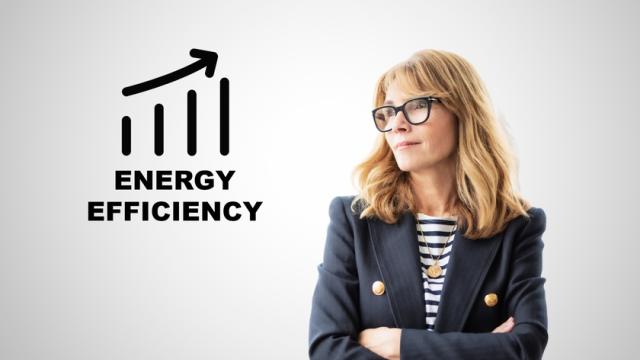Energy-efficient upgrades can reduce your operating costs. Find out how they can help support your other business goals as well.
Implementing a business strategy typically involves setting goals and objectives and creating a plan to meet those goals. If energy efficiency isn't part of your business strategy, maybe it should be. After all, energy efficiency can help reduce your operating costs, improving your profitability — both worthy business goals. Beyond that, energy efficiency upgrades can help you meet other business objectives. Here are three common business goals and how energy efficiency can help.
1. Boost Productivity
Energy-saving improvements, such as natural ventilation and daylighting, can improve indoor air quality and enhance the overall work environment. Healthier workers are more productive and call in sick less frequently. A World Green Building Council study estimated worker productivity increases of 23% from better lighting, 11% from better ventilation and 3% from individual temperature control.
2. Increase Sales
To increase sales, you need to keep your customers happy — and get more of them. Energy efficiency upgrades can help. Lighting and HVAC system upgrades, as well as air sealing and proper insulation, can enhance the appearance of a facility and create a more comfortable, inviting atmosphere. This is especially important for customer service facilities such as stores and restaurants. Customers stay longer, spend more money and come back more often.
3. Improve Product Quality
Your customers expect quality products. High-efficiency lights, such as LEDs, typically increase light output and enhance color quality. This improves the visibility of a workplace, which can reduce error rates and increase overall product quality. You'll have less waste, lower rework costs and more satisfied customers.
Strategic Investments in Energy Efficiency
Now you know how energy-efficiency upgrades can help improve your business operations. What should you do next? Prioritize these strategic efficiency measures that can help you achieve your overall business objectives.
Check your HVAC system. Indoor environmental quality and comfort have a significant impact on employee performance and indoor health and comfort. Hire a qualified contractor to inspect and clean your HVAC system. If your system is older or in need of repair, consider upgrading to a new high-efficiency system.
Weatherize your building. Gaps in windows and exterior doors and poor insulation can make your building less comfortable. Check for air leaks and seal any you find with caulk or weatherstripping. Contact a qualified insulation contractor to check your insulation levels and add insulation if needed.
Upgrade to LED lighting. LEDs are not only more efficient than commonly used fluorescent lamps; they offer improved light quality. This will enhance visibility and your overall indoor environment. LEDs are also inherently dimmable, making them a perfect fit for daylighting controls, which can help you create a more inviting indoor atmosphere.
Conduct a facility energy audit. A qualified professional will inspect your facility and provide you with a set of customized energy-efficiency recommendations that will save you money, improve your indoor environment and help you achieve your overall business goals.
For long-term energy savings, consider establishing an energy management plan. For information on how to start, see Guidelines for Energy Management from ENERGY STAR®.
January 2024 Empowering Small Business
LADWP's monthly Empowering Small Business Newsletter helps inform industry-specific small business customers about LADWP news, conservation programs and ways to save on their bill.
Full Newsletter